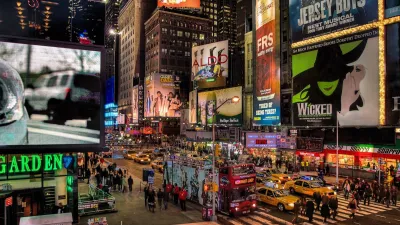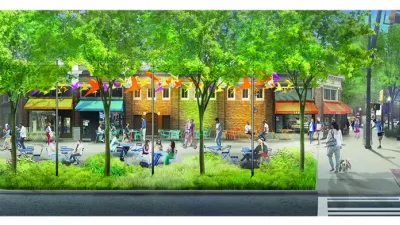The concept, touted as "hyper-local," can fail to take into account local conditions and historical inequities in American cities.

The concept of the "15-minute city" has been adopted as an aspirational buzzword by city leaders across the United States, but "there are dangers of applying a model conceived in Europe to many North American cities," writes Feargus O'Sullivan for Bloomberg CityLab. Urban designer Jay Pitter calls transplanting the idea potentially "presumptive and colonial," arguing that "it doesn't take into account the histories of urban inequity, intentionally imposed by technocratic and colonial planning approaches, such as segregated neighborhoods, deep amenity inequity and discriminatory policing of our public spaces" that are deeply embedded in American cities.
European cities, designed before mass car ownership, are more well-suited to the notion of the 15-minute city, writes O'Sullivan. The lofty goal of creating small neighborhoods where all amenities are within easy reach is "unlikely to reach all neighborhoods in many cities without drastic interventions and investments," and "simply injecting design changes such as bike lanes and parklets into a neighborhood will not reverse segregation that has been embedded into city planning."
The proposals neglect "a century of planning interventions that have actually concretized deep social divisions between people," says Pitter, calling the concept "top-down, technocratic urban planning" rather than a "systematic and holistic approach" that would more carefully consider social relationships and historic inequities. While it claims to be hyper-local, Pitter argues that implementing the approach without consideration to local conditions has the opposite effect.
FULL STORY: Where the ‘15-Minute City’ Falls Short

Planetizen Federal Action Tracker
A weekly monitor of how Trump’s orders and actions are impacting planners and planning in America.

San Francisco's School District Spent $105M To Build Affordable Housing for Teachers — And That's Just the Beginning
SFUSD joins a growing list of school districts using their land holdings to address housing affordability challenges faced by their own employees.

The Tiny, Adorable $7,000 Car Turning Japan Onto EVs
The single seat Mibot charges from a regular plug as quickly as an iPad, and is about half the price of an average EV.

Seattle's Plan for Adopting Driverless Cars
Equity, safety, accessibility and affordability are front of mind as the city prepares for robotaxis and other autonomous vehicles.

As Trump Phases Out FEMA, Is It Time to Flee the Floodplains?
With less federal funding available for disaster relief efforts, the need to relocate at-risk communities is more urgent than ever.

With Protected Lanes, 460% More People Commute by Bike
For those needing more ammo, more data proving what we already knew is here.
Urban Design for Planners 1: Software Tools
This six-course series explores essential urban design concepts using open source software and equips planners with the tools they need to participate fully in the urban design process.
Planning for Universal Design
Learn the tools for implementing Universal Design in planning regulations.
Smith Gee Studio
City of Charlotte
City of Camden Redevelopment Agency
City of Astoria
Transportation Research & Education Center (TREC) at Portland State University
US High Speed Rail Association
City of Camden Redevelopment Agency
Municipality of Princeton (NJ)





























